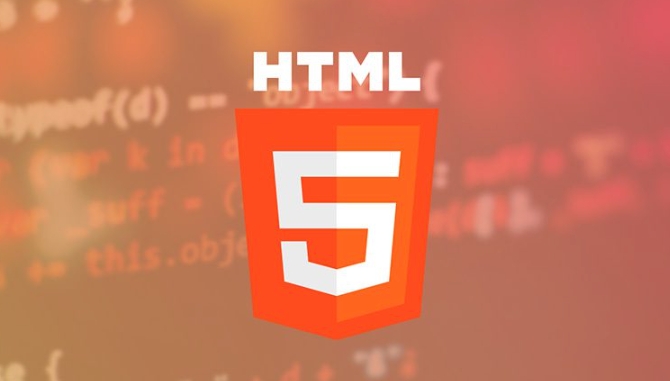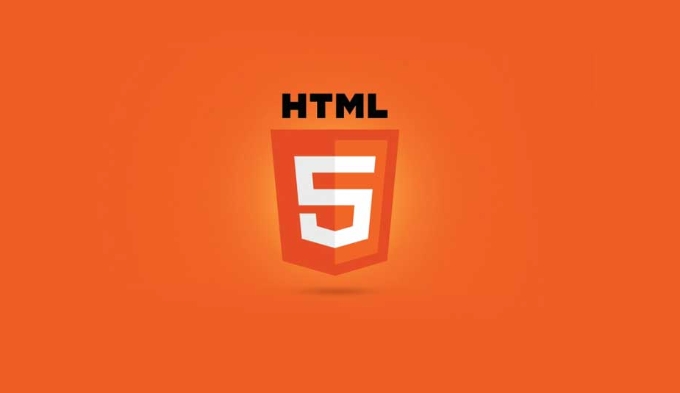HTML5 form validation using required and pattern attributes
Jul 06, 2025 am 12:40 AMForm verification can be achieved through HTML5's required and pattern properties. 1. requires to ensure that the field is not empty, and is suitable for text boxes, drop-down boxes, password boxes, etc.; 2. Pattern checks the format through regular expressions, such as mobile phone number, postal code, etc.; 3. The two are often used together. requires first verify whether it is empty, and then the pattern determines whether the format is correct; 4. Example: The user name input box uses pattern to restrict the combination of 4-10 letters and numbers and sets the required attribute.

Form verification is a very important part of web development, especially when users submit information. HTML5 provides some native properties to help us more easily implement basic form validation, where required and pattern are the two most commonly used and practical.

Required verification: Use the required attribute
If you want an input box to be empty, just add the required property. The browser will automatically check whether these fields are filled in when the user tries to submit the form.

For example:
<input type="text" name="username" required>
In this way, if the user does not enter anything in the username input box, the browser will prompt a default message such as "Please fill in this field". The prompts displayed by different browsers may vary slightly, but the behavior is consistent.

Tips:
requiredis not only suitable for text input boxes, but also supports<select>,<textarea>, and various types of<input>, such as email, number, etc.
Format verification: Use pattern to match regular expressions
Sometimes we not only require users to fill in the content, but also require them to fill in it in a specific format, such as mobile phone number, postal code, password rules, etc. At this time, you can use pattern attribute and regular expressions to complete it.
For example, users must enter passwords that combine 6 to 8 letters and numbers:
<input type="password" name="password" pattern="[A-Za-z0-9]{6,8}" required>A few points to note:
-
patternis only valid for<input type="text">and its variants (such as password, search). - Regular expressions do not need to write the beginning and ending
/, just write the matching rules directly. - If the user input does not comply with the rules, the browser will also pop up.
Common usage examples:
- Mobile phone number:
pattern="1[3-9]\d{9}" - Email: Although you can write the rules yourself, it is actually easier to use
type="email"directly - Username only allows letters and underscores:
pattern="[A-Za-z_] "
Notes on using required and pattern in combination
These two attributes often appear together, such as the username or password field in the registration page. There will be no conflict between them, and there are no special order requirements, but the following points should be paid attention to:
-
requiredensures that the field is not empty -
patternis formatted on the basis of non-empty fields - If the field is empty but
patternis set, the browser will not verify the regular part because it has not reached that step yet.
To give a complete example:
<form>
<label>Username (4-10 alphanumeric):</label>
<input type="text" name="username" pattern="[A-Za-z0-9]{4,10}" required>
<button type="submit">Submit</button>
</form>This ensures that the user has not only filled in the content but also meets the format requirements.
Basically that's it. The rational use of required and pattern can greatly reduce the workload of front-end verification. Although they cannot replace back-end verification, they do add a lot of points to user experience.
The above is the detailed content of HTML5 form validation using required and pattern attributes. For more information, please follow other related articles on the PHP Chinese website!

Hot AI Tools

Undress AI Tool
Undress images for free

Undresser.AI Undress
AI-powered app for creating realistic nude photos

AI Clothes Remover
Online AI tool for removing clothes from photos.

Clothoff.io
AI clothes remover

Video Face Swap
Swap faces in any video effortlessly with our completely free AI face swap tool!

Hot Article

Hot Tools

Notepad++7.3.1
Easy-to-use and free code editor

SublimeText3 Chinese version
Chinese version, very easy to use

Zend Studio 13.0.1
Powerful PHP integrated development environment

Dreamweaver CS6
Visual web development tools

SublimeText3 Mac version
God-level code editing software (SublimeText3)

Hot Topics
 What is Microdata? HTML5 Explained
Jun 10, 2025 am 12:09 AM
What is Microdata? HTML5 Explained
Jun 10, 2025 am 12:09 AM
MicrodataenhancesSEOandcontentdisplayinsearchresultsbyembeddingstructureddataintoHTML.1)Useitemscope,itemtype,anditempropattributestoaddsemanticmeaning.2)ApplyMicrodatatokeycontentlikebooksorproductsforrichsnippets.3)BalanceusagetoavoidclutteringHTML
 Microdata in HTML5: The Key to Better Search Engine Ranking
Jun 12, 2025 am 10:22 AM
Microdata in HTML5: The Key to Better Search Engine Ranking
Jun 12, 2025 am 10:22 AM
MicrodatasignificantlyimprovesSEObyenhancingsearchengineunderstandingandrankingofwebpages.1)ItaddssemanticmeaningtoHTML,aidingbetterindexing.2)Itenablesrichsnippets,increasingclick-throughrates.3)UsecorrectSchema.orgvocabularyandkeepitupdated.4)Valid
 Audio and Video : What about browser compatibility?
Jun 11, 2025 am 12:01 AM
Audio and Video : What about browser compatibility?
Jun 11, 2025 am 12:01 AM
Browser compatibility can ensure that audio and video content works properly in different browsers by using multiple formats and fallback strategies. 1. Use HTML5 audio and video tags and provide multiple format sources such as MP4 and OGG. 2. Consider automatic playback and mute strategies and follow the browser's policies. 3. Handle cross-domain resource sharing (CORS) issues. 4. Optimize performance and use adaptive bit rate streaming media technologies such as HLS.
 Audio and Video: HTML5 VS Youtube Embedding
Jun 19, 2025 am 12:51 AM
Audio and Video: HTML5 VS Youtube Embedding
Jun 19, 2025 am 12:51 AM
HTML5isbetterforcontrolandcustomization,whileYouTubeisbetterforeaseandperformance.1)HTML5allowsfortailoreduserexperiencesbutrequiresmanagingcodecsandcompatibility.2)YouTubeofferssimpleembeddingwithoptimizedperformancebutlimitscontroloverappearanceand
 Audio and Video: can i record it?
Jun 14, 2025 am 12:15 AM
Audio and Video: can i record it?
Jun 14, 2025 am 12:15 AM
Yes,youcanrecordaudioandvideo.Here'show:1)Foraudio,useasoundcheckscripttofindthequietestspotandtestlevels.2)Forvideo,useOpenCVtomonitorbrightnessandadjustlighting.3)Torecordbothsimultaneously,usethreadinginPythonforsynchronization,oroptforuser-friend
 Adding Audio and Video to HTML: Best Practices and Examples
Jun 13, 2025 am 12:01 AM
Adding Audio and Video to HTML: Best Practices and Examples
Jun 13, 2025 am 12:01 AM
Use and elements to add audio and video to HTML. 1) Use elements to embed audio, make sure to include controls attributes and alternate text. 2) Use elements to embed video, set width and height attributes, and provide multiple video sources to ensure compatibility. 3) Add subtitles to improve accessibility. 4) Optimize performance through adaptive bit rate streaming and delayed loading. 5) Avoid automatic playback unless muted, ensuring user control and a clear interface.
 What is the purpose of the input type='range'?
Jun 23, 2025 am 12:17 AM
What is the purpose of the input type='range'?
Jun 23, 2025 am 12:17 AM
inputtype="range" is used to create a slider control, allowing the user to select a value from a predefined range. 1. It is mainly suitable for scenes where values ??need to be selected intuitively, such as adjusting volume, brightness or scoring systems; 2. The basic structure includes min, max and step attributes, which set the minimum value, maximum value and step size respectively; 3. This value can be obtained and used in real time through JavaScript to improve the interactive experience; 4. It is recommended to display the current value and pay attention to accessibility and browser compatibility issues when using it.
 How can you animate an SVG with CSS?
Jun 30, 2025 am 02:06 AM
How can you animate an SVG with CSS?
Jun 30, 2025 am 02:06 AM
AnimatingSVGwithCSSispossibleusingkeyframesforbasicanimationsandtransitionsforinteractiveeffects.1.Use@keyframestodefineanimationstagesforpropertieslikescale,opacity,andcolor.2.ApplytheanimationtoSVGelementssuchas,,orviaCSSclasses.3.Forhoverorstate-b






